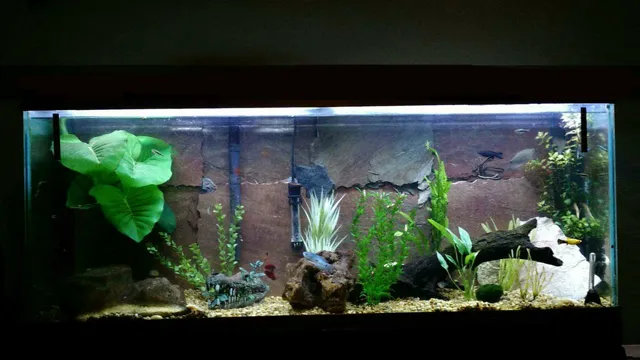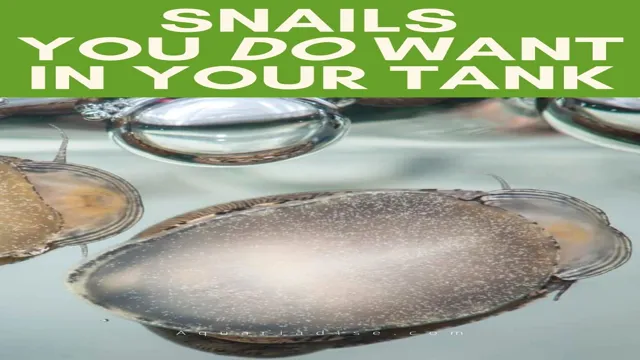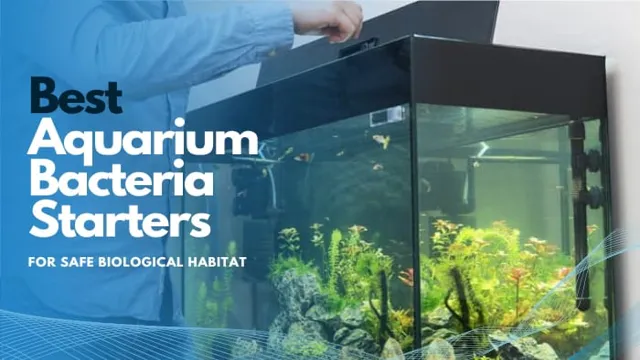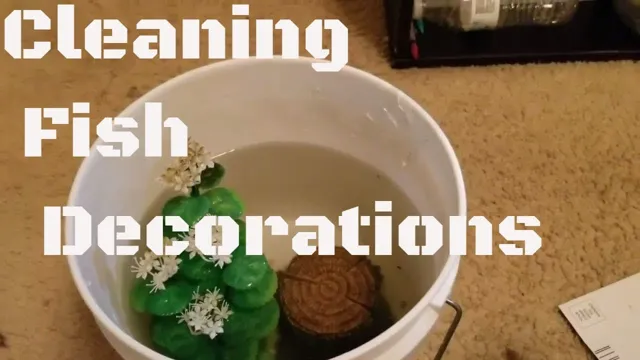Aquarium plants are a beautiful addition to any fish tank; they provide oxygen, shelter, and a naturalistic atmosphere to your aquatic pets. However, as with any living organism, they require proper care and maintenance to thrive. The buildup of algae on the leaves and stems of aquarium plants is a common problem that can impact their growth and overall health.
Nobody wants to look into their tank and see a murky, green mess. So, how can you get rid of algae on your aquarium plants without harming the plants themselves? In this blog post, we will share some tips and tricks to help keep your aquarium plants looking healthy and vibrant.
Understanding Algae in Aquariums
If you’re struggling with cleaning algae off of your aquarium plants, there are a few things to consider. Firstly, it’s important to understand that algae is a natural occurrence in aquariums and can actually be beneficial to some extent. Algae can help provide oxygen and food for your fish, but it can also become unsightly and problematic if it grows out of control.
To clean algae off of your plants, you can use a soft-bristled brush or even gently rub the leaves between your fingers. Another option is to add algae-eating fish or snails to your tank, which can help keep the algae under control. It’s also important to maintain a balanced ecosystem in your aquarium by monitoring light exposure, providing proper filtration, and regularly cleaning the tank.
By taking these steps, you can keep your aquarium plants healthy and free of unsightly algae buildup.
Different Types of Algae in Aquariums
If you’re an aquarium hobbyist, the presence of algae in your tank can be frustrating and overwhelming. Understanding the different types of algae is important in order to properly manage and prevent an infestation. Some of the most common types of algae in aquariums include green algae, brown algae, red algae, and blue-green algae.
Green algae, also called filamentous algae, is often found in the form of stringy or hair-like strands and can overtake plants and decorations in the tank. Brown algae, or diatoms, typically form a thin film on the glass, substrate, and decorations in the tank. Red algae, also known as brush algae, forms a reddish-brown tuft on plants and decorations in the tank.
Lastly, blue-green algae, or cyanobacteria, forms a slimy blue-green layer on the surface of the Aquarium water. For proper management of algae in your aquarium, it’s important to identify the type of algae present and then take appropriate steps such as controlling lighting and nutrient levels in the water.
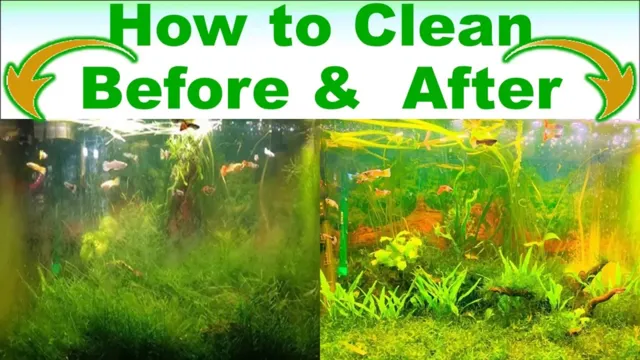
Causes of Algae Growth on Plants
Algae growth in aquariums can be a common issue for many fish enthusiasts, and understanding the causes behind it can help prevent and address the problem. Algae thrive in environments with ample light, high nutrient levels, and stagnant water. Overfeeding your fish and not properly cleaning your aquarium can lead to an overabundance of organic matter, which can fuel algae growth.
Additionally, high levels of nitrates and phosphates can further exacerbate the issue. To prevent algae growth, make sure to clean your aquarium regularly, avoid overfeeding your fish, and consider introducing live plants or algae-eating organisms such as snails or shrimp. By maintaining a healthy environment for your aquatic pets, you can minimize the occurrence of algae and ensure a thriving ecosystem.
Preventing and Treating Algae on Plants
Are you tired of seeing algae growth on your aquarium plants? There are a few ways to prevent and treat this issue. One way is to regularly clean your aquarium and change the water as algae thrives in dirty water. You can also limit the amount of light your plants receive, as excessive light can promote algae growth.
Another solution is to add a few shrimp or snails to your aquarium as they will help eat the algae. When it comes to treating already affected plants, you can use an algae scraper or toothbrush to gently remove the algae from the leaves. Additionally, you can use a commercial algae treatment specifically made for aquarium plants. (See Also: How Thick to Make Acrylic Aquarium for Optimum Durability?)
Remember to always carefully follow the instructions on any product you use and monitor your aquarium to ensure the health of your plants and fish. By taking proactive steps, you can ensure your aquarium plants stay healthy and free of unsightly algae growth.
Regularly Inspecting and Cleaning the Tank
If you have an aquarium, you know how important it is to regularly inspect and clean the tank. One issue that can arise for aquarium owners is the growth of algae on plants. While some algae growth is normal and actually beneficial for the aquarium’s ecosystem, excessive growth can harm the plants and fish.
To prevent algae growth, it’s important to keep the tank clean and free from excess nutrients like excess fish food and waste. Proper lighting is also important as too much light can promote algae growth. If you notice algae starting to grow, there are treatment options available such as adding algae-eating fish, using algae-reducing chemicals, or manually cleaning the plants.
Remember to always research the best treatment options for your specific aquarium setup and avoid using harsh chemicals that can harm the plants and fish. By properly maintaining your aquarium and being proactive in preventing and treating algae growth, you can provide a healthy environment for your aquatic pets.keywords: aquarium, inspect, clean, tank, algae, plants, ecosystem, nutrients, fish, lighting, treatment, fish food, waste, chemicals, maintaining, pets.
Reducing Light Exposure in the Tank
Algae growth on plants can be a frustrating and unsightly issue in any aquarium. Fortunately, there are ways to prevent and treat this problem. One effective method is to reduce the light exposure in the tank.
Algae thrives in brightly lit environments, so it’s important to provide your plants with just enough light to keep them healthy without encouraging algae growth. This can be achieved by adjusting the intensity and duration of the lighting or by providing shading for the plants. It’s also important to regularly clean the tank and remove any excess debris or dead plant matter, as these can contribute to algae growth.
Additionally, using a UV sterilizer or adding algae-eating fish to the tank can help keep algae under control. By taking these steps, you can ensure that your plants remain healthy and free from unwanted algae growth.
Using Algae-Eating Fish and Invertebrates
Algae overgrowth can make maintaining an aquarium or pond difficult and unappealing. A great solution for preventing and treating algae growth is through the use of algae-eating fish and invertebrates. These organisms love to munch on algae, providing a natural and effective solution to keep plants clean and healthy.
There are several types of algae-eating fish, including plecos, Siamese algae eaters, and otocinclus. Invertebrates like snails and shrimp are also excellent algae grazers. It’s important to remember that while these organisms help to control algae growth, they may not eliminate it completely.
Proper aquarium and pond maintenance is still necessary to keep the ecosystem balanced. Using algae-eating fish and invertebrates is a great way to keep your plants healthy and vibrant!
Methods for Removing Algae on Plants
If you’re into aquascaping, then you know all too well the struggle of keeping aquarium plants free of algae. However, with the right methods, you can successfully remove algae from your aquarium plants and keep them healthy. First, make sure to remove any dead or dying leaves as they can attract algae growth.
Then, consider using a hydrogen peroxide solution to treat the plants that have been infested with algae. This can be done by using a 3% hydrogen peroxide solution and applying it to the infected areas using a dropper. Wait for a few minutes before washing the plants with fresh water. (See Also: How Powerful Does Your Aquarium Filter Need to Be? A Beginner’s Guide to Optimum Filtration.)
Alternatively, you can also use a diluted bleach solution to get rid of algae. Make sure to rinse the plants thoroughly afterwards to prevent any lasting damage. Remember, prevention is always better than treatment, so make sure to maintain proper water conditions and limit any excess light exposure to your aquarium plants to avoid future algae growth.
By following these methods, you’ll be well on your way to a beautifully maintained aquascape!
Gentle Scrubbing and Brushing of Plants
When it comes to removing algae on plants, one of the gentlest methods is through scrubbing and brushing. This approach is especially useful for delicate plants that can’t withstand harsher cleaning solutions or methods. Simply take a soft-bristled brush and gently scrub the affected areas of the plant.
Pay particular attention to any hard-to-reach areas like leaves or stems. Alternatively, you can use a damp cloth or sponge to wipe away the algae. The unique thing about this method is that it not only removes the visible algae but also helps to aerate the plant and increase circulation, which will assist in the overall maintenance and growth of the plant.
However, you also need to be careful not to cause damage to the plant while scrubbing. Therefore, it is essential to use a light touch and be gentle in your approach. Overall, if done correctly, scrubbing and brushing are an excellent, low-cost, and effective way of removing algae from your plants without harming them in any way.
Hydrogen Peroxide Solution for Algae Removal
Plants can be aesthetically pleasing additions to any living space, but when algae start to take over, they can quickly turn from a source of beauty to an eyesore. Fortunately, there are several methods to remove the green gunk from your plants, and one of the most effective solutions is hydrogen peroxide. Hydrogen peroxide is an eco-friendly option that can eliminate algae without harming the plant.
To create a hydrogen peroxide solution, mix one part hydrogen peroxide with four parts water and spray the affected areas using a spray bottle. Leave it to work its magic for a few minutes, and then rinse the plant thoroughly with water. This method can effectively remove algae and prevent it from growing back.
Overall, using hydrogen peroxide solution for algae removal is an easy, safe, and effective way to keep your plants looking beautiful and healthy.
Final Tips and Precautions for Algae Removal on Plants
When it comes to cleaning algae off of aquarium plants, there are a few final tips and precautions to keep in mind. First and foremost, be sure to properly identify the algae you’re dealing with, as different types may require different methods of removal. Additionally, avoid using any harsh chemicals or cleaning products that could harm your plants or fish.
Instead, consider using natural remedies such as hydrogen peroxide or a diluted bleach solution. It’s also important to maintain a healthy balance in your aquarium, including proper lighting and water conditions, as this can help prevent algae growth in the first place. With a little bit of effort and attention, you can keep your aquarium plants looking healthy and beautiful for years to come.
Conclusion
In conclusion, cleaning algae off of aquarium plants can be a daunting task, but with a few simple steps, it can be accomplished easily. First, ensure that your aquarium is properly balanced, with the correct lighting and water parameters. Next, carefully remove any affected plants from the tank and gently scrub away the algae with a soft-bristled brush or sponge. (See Also: How to Make Aquarium Air Pump Quiet: Top Tips & Tricks)
Finally, rinse the plants thoroughly before adding them back into your tank. Remember, a clean aquarium is a happy aquarium, and your plants will thrive with some extra TLC. So don’t let algae take over your aquatic paradise – take control and keep your plants looking pristine!”
FAQs
What is the best way to remove algae from aquarium plants?
The best way to remove algae from aquarium plants is to scrub them gently with a soft-bristled brush or toothbrush.
Can I use bleach to clean my aquarium plants?
No, bleach should not be used to clean aquarium plants, as it can be harmful to both the plants and fish.
How often should I clean algae off of my aquarium plants?
It is recommended to clean algae off of aquarium plants once a week to prevent a buildup and keep them healthy.
What are some natural ways to remove algae from aquarium plants?
Natural ways to remove algae from aquarium plants include adding freshwater snails, reducing feeding and light, and adding live plants that compete with algae for nutrients.
Are there any algae-eating fish that can help keep my plants clean?
Yes, there are fish species such as otocinclus, Siamese algae eaters, and nerite snails that can help control algae and keep plants clean.
Can I use chemicals to kill algae on my aquarium plants?
Chemicals should be avoided as they can be harmful to the plants and fish. It is best to use manual or natural methods to clean algae.
What environmental factors can contribute to algae growth on aquarium plants?
Environmental factors such as overfeeding, too much light, and poor water quality can contribute to algae growth on aquarium plants.



